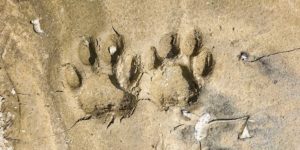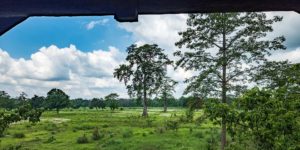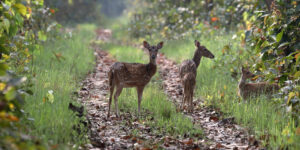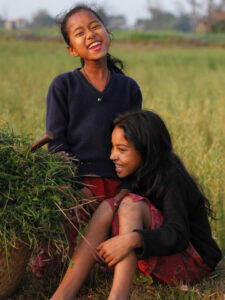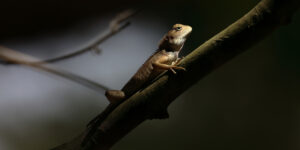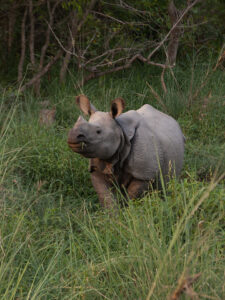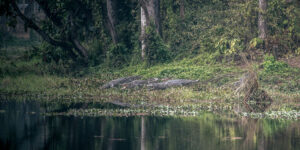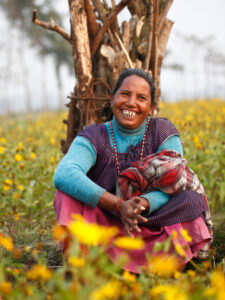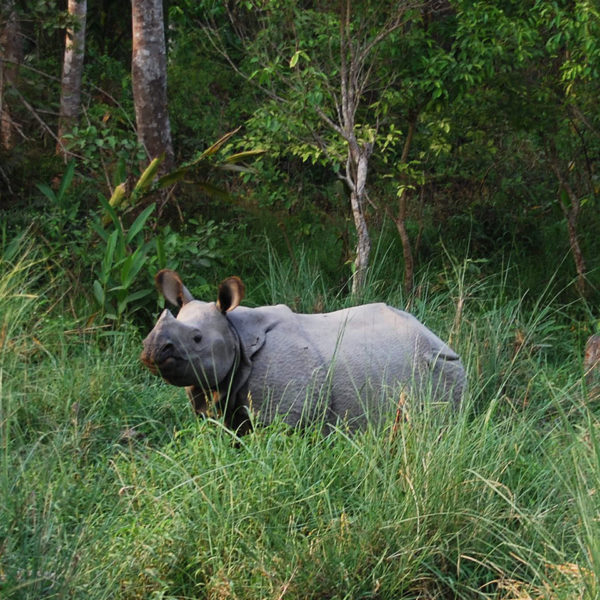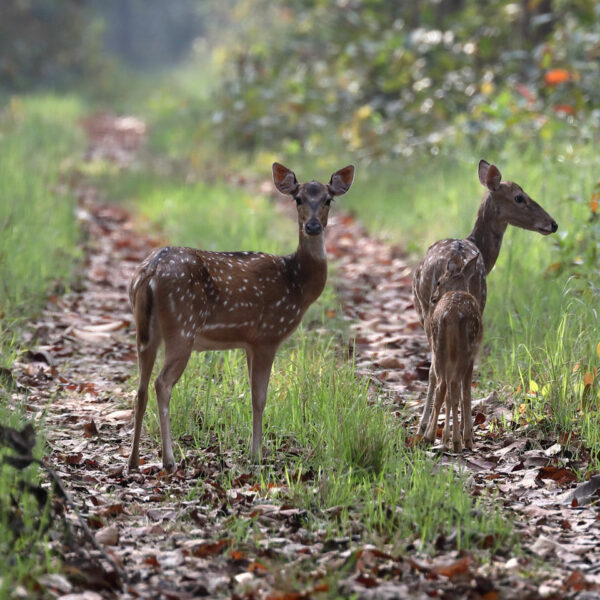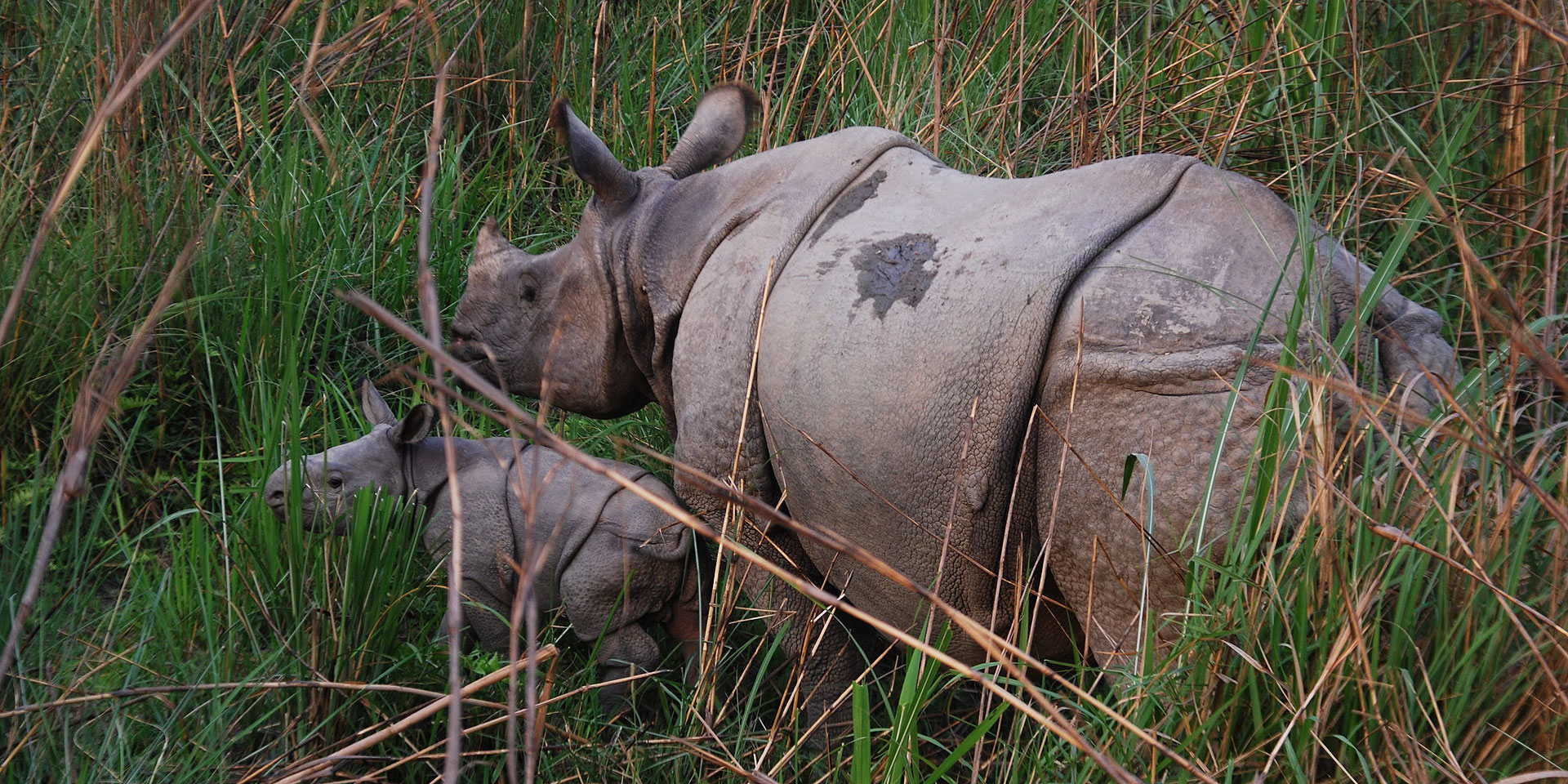
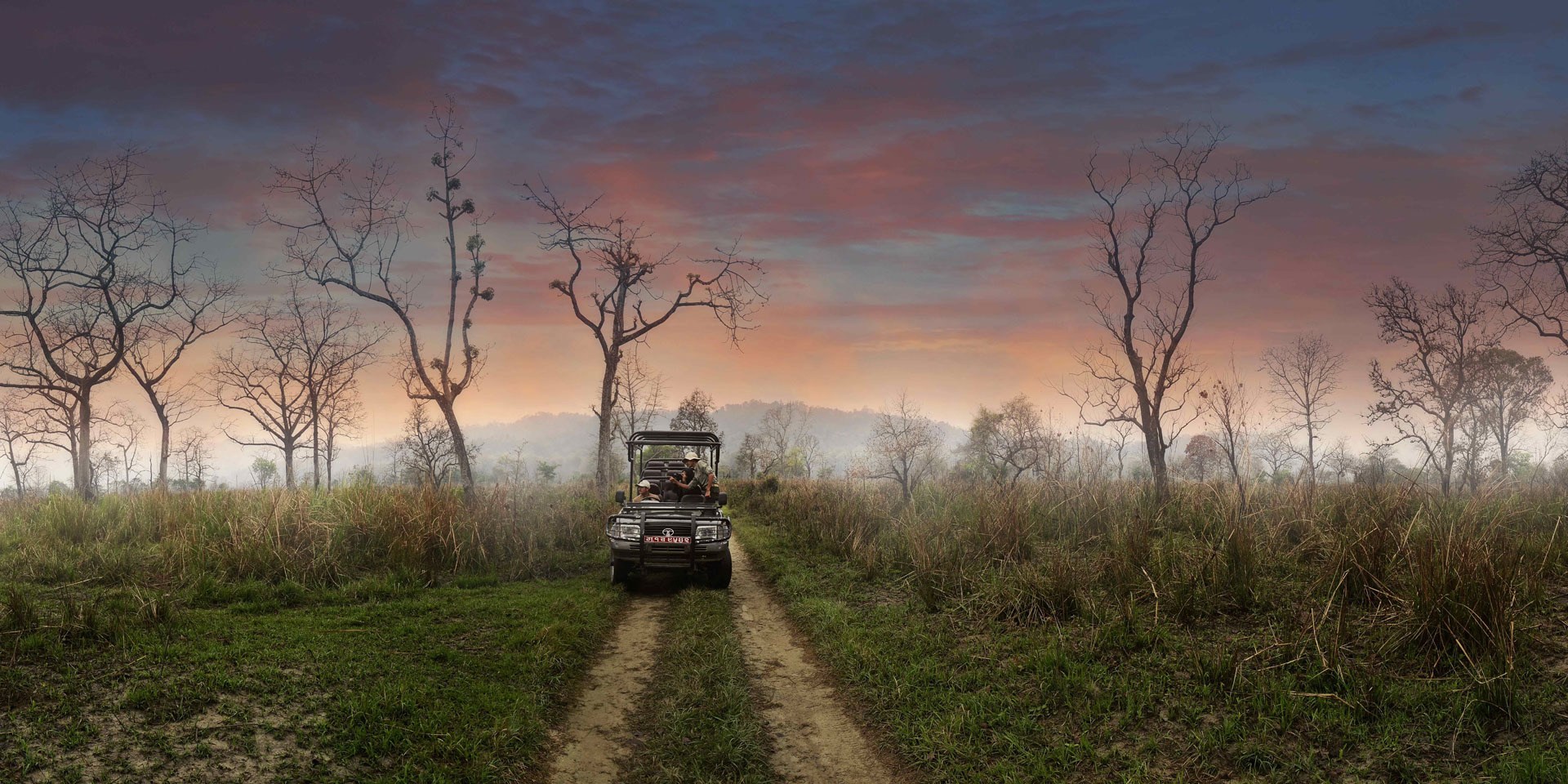

Parsa and Chitwan National Parks via Madi
Parsa National Park is remote and pristine, a breathtaking sanctuary, known for its rich biodiversity and untouched landscapes. Spanning over 627 square kilometres, this protected area offers a rare opportunity to experience Nepal’s wildlife in a serene and less crowded setting. The park is renowned for its majestic Bengal tigers, one-horned rhinoceroses, herds of wild elephants, and the elusive sloth bears that wander through the forests. Additionally, visitors may encounter impressive gaur (Indian bison) and the elegant nilgai (blue bull), further highlighting the park’s diverse vertebrate inhabitants. With over 400 bird species—including vibrant kingfishers, hornbills, and waterfowl—Parsa is also a paradise for birdwatchers. The exclusivity of this destination is one of its greatest attractions, as its low number of visitors ensures a truly intimate wilderness experience.
Chitwan National Park is Nepal’s first and most renowned protected area, celebrated as a UNESCO World Heritage Site. Spanning over 932 square kilometers, it is one of Asia’s premier wildlife safaris destinations. The park’s diverse landscapes include lush grasslands, dense forests, and wetlands, offering a perfect habitat for a wide array of wildlife. Visitors can witness majestic Bengal tigers, one-horned rhinoceroses, gentle river dolphins, and numerous deer species. Chitwan is also famous for its impressive populations of gharial crocodiles and marsh mugger crocodiles. Its remarkable biodiversity and accessible location make it an ideal choice for unforgettable jungle safaris.
Our journey to Parsa National Park and exploration of the Madi Valley offer a wonderful opportunity to experience the rich cultures of the Tharu, Bot, and other communities from the Terai. Over the past 60 years, since the eradication of malaria, many hill communities have migrated to this lush region, adding to its cultural diversity. Join us to uncover these hidden gems and enjoy a unique encounter with Nepal’s vibrant wildlife and diverse cultures.
- Starts In: Kathmandu
- Ends In: Kathmandu/Pokhara
- Duration: 4 Days
- Difficulty Grade: Easy
Highlights
- Experience the little visited Parsa National park
- Explore the Madi valley set deep inside the Terai jungles
- Worldclass birdwatching in Parsa, Madi and Chitwan
- Go on a walking safari, a unique way to experience the jungle
- Spot the Greater One-horned Rhinoceros
- Experience the culture of the Tharu people
Itinerary
Day 01: Fly from Kathmandu to Simara, safari Parsa National Park
After breakfast you will head the airport for the short flight to Simara in the Terai region of Nepal. The landscape and culture is totally different from what you might have experienced so far and from the high, alpine regions of the Himalayan range. The name the ‘Terai’ refers to the extensive plains in the southern part of Nepal – this area is the most northern extension of the great Gangetic plains of India, land that was won and lost in decades of struggle and it now shares both Indian and Nepali characteristics and culture.
Upon landing in Simara we will go to a nice cafe close by for an early lunch as there is nowhere between here and the jungle for lunch and we will only get to our Resort at the end of the day. The cafe Miles29 is a great story of a young Nepali man returning to his hometown to do something rather than heading abroad. This is great to see and it’s wonderful to see how these places are coming up all over regional Nepal and not just in the big cities.
After lunch it is about an hour’s drive through rural Terai villages and fields to where we meet our safari vehicle in a small Tharu village a little south of the Parsa National Park. In our open safari vehicle we drive through a few more stunning Tharu villages before entering the forest and after a few kilometres we come to a small army post which marks the entrance to the Parsa National Park.
The next few hours we will drive and walk through Sal forests, open grass lands and some riverine landscape in the park and it is very unlikely you will meet anyone else, as the Parsa National Park is unexplored and much less visited than neighbouring Chitwan National Park. We will stop and look for wildlife from a few watchtowers along our drive through the park, which is a great opportunity to just sit and take in this serene and stunning jungle. While the same animals are found in Parsa as in Chitwan we are very unlikely to see the one-horned rhinoceroses. However, there were 41 Bengal tigers found in the last survey of the park and it is home to many wild elephants, and elusive sloth bears. We may also see gaur (Indian bison), nilgai (blue bull), and over 400 bird species, making it a haven for wildlife and birdwatching.
In the late afternoon we will exit the national park a short drive from our resort for the night in Thori, right on the border with India. Across the border is the Valmiki Tiger Reserve, another stunning jungle in the Terai landscape and big herds of elephants migrate from one jungle to the other not taking any notice of borders. You may hear loud music in the night from the surrounding villages to try and scare the elephants away. This is just part of the human – wildlife relationship that plays out in the villages close to the national parks.
Accommodation: Thori Jungle resort https://www.thorijungleresort.com.np/
Meals included:
Lunch, Dinner

Day 02: Drive through the Jungle to Madi and Chitwan
This morning, we have an early start. We have a 12 km jungle drive ahead of us to cross the jungle from Thori to the Madi Valley in Chitwan. This drive offer a great chance to see wildlife as we come from the dry sal forest of the south to the riverine forest of Chitwan. Because this is such a great opportunity to see more wildlife, we do this drive in an open safari jeep.
While in Madi, we have a couple of options; we can either walk to the lovely Baikuntha Tal (lake) and waterfall, a short walk that offer lots of opportunity for spotting birds and just enjoy this lovely setting in the Someshwar Range which is the southern boundary of the Madi valley and on the Indian border. This place also holds a deep spiritual meaning for the locals of the Madi vallley.
Another option is to drive to the northern end of the Madi valley, where we can spend the rest of the morning doing a walking safari in the community forest at Pandavnagar. This forest is very rich in wildlife at is just on the edge of the Chitwan National Park.
We will have our lunch at the homestay of a local lady called Sarita, an old friend of Himalayan Trails. This is an opportunity to the taste of a real home-cooked meal. Sarita has lived her whole life here on the edge of the jungle and now makes some income from visitors who come to see the wildlife, a good change from the past when the wildlife was only experienced as a threat to life and income of the villages here in Madi.
After lunch we will be picked up by a safari jeep from the jungle lodge where we are going to be spending the next couple of nights. They will take us for an afternoon jeep safari in the Chitwan National Park itself. Wildlife in Chitwan includes the greater one-horned rhinoceros, spotted deer, hog deer, sambar deer, and barking deer as well as a wide variety of birdlife. With a bit of luck, there is always the chance of glimpsing the leopard, sloth bear and royal Bengal tiger.
We check in at our safari lodge at the end of an amazing day and after a shower, we can enjoy a drink overlooking the Rapti river and the Chitwan National Park across the river.
Accommodation: Jungle Villa http://www.junglevillaresort.com/
Meals included:
Breakfast, Lunch, Dinner
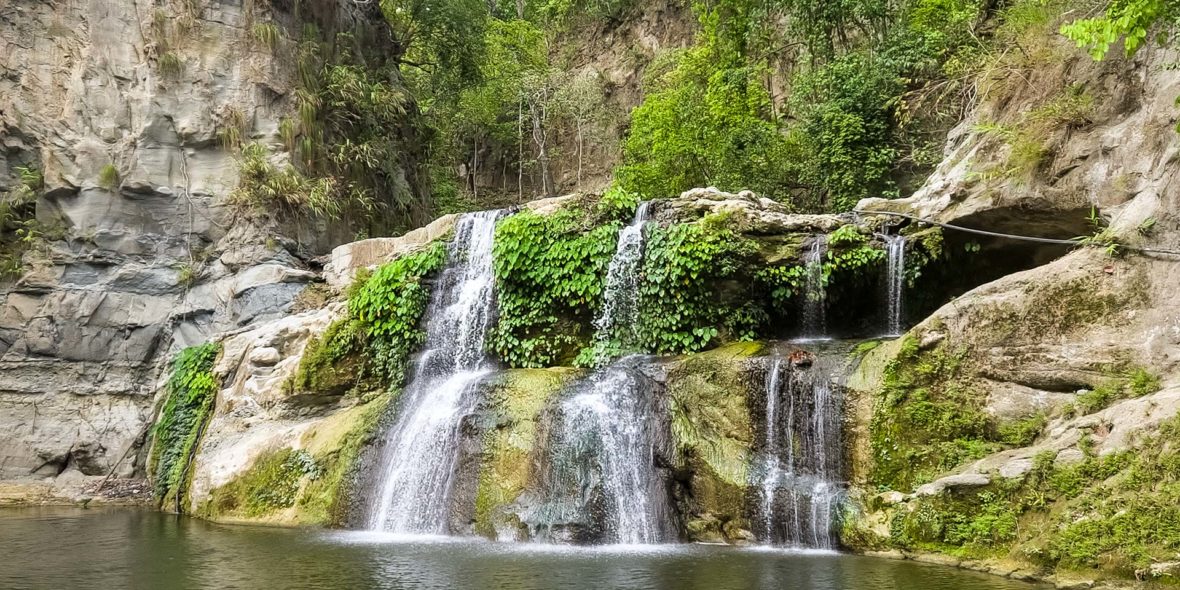
Day 03: In Chitwan - Jungle
Today you will have a full day of Jungle Safari activities exploring the dense jungle in search of wildlife! Other activities you have the chance to experience include jungle walks, bird-watching, jungle safaris on the back of a jeep, river safaris in traditional canoes and wildlife viewing.
Your experienced guides will teach you all about jungle life, the ways of the animals living here, the exotic jungle flora, abundant birdlife and of course about the conservation programs being run here. This is truly a great opportunity to get close to one of Nepal’s unique ecosystems, to learn about the fragile web of life and what we can do to help preserve it for future generations.
Accommodation: Jungle Villa http://www.junglevillaresort.com/
Meals included:
Breakfast, Lunch, Dinner
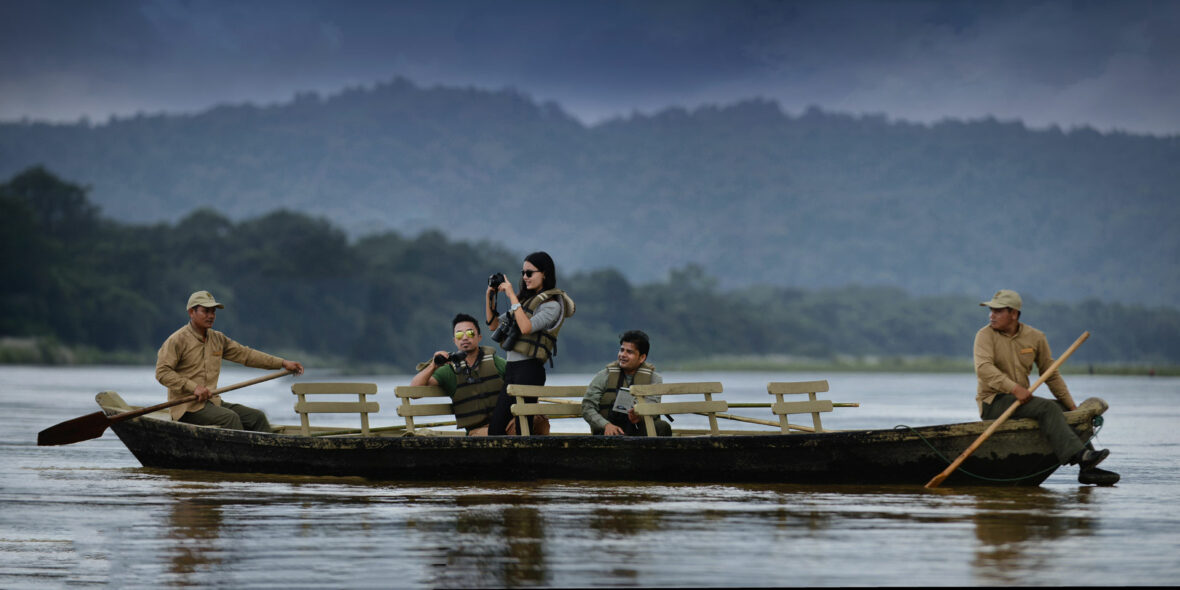
Day 04: Drive/Fly from Chitwan to Kathmandu
After breakfast you will be escorted back to Kathmandu in your private vehicle – you will arrive in mid-afternoon (depending on the road conditions) and should have some time for last-minute shopping or just relaxing and enjoying being in a place so different from home.
Otherwise, you can fly all the way back to Kathmandu a flight of just 20 minutes.
Accommodation: None
Meals included:
Breakfast
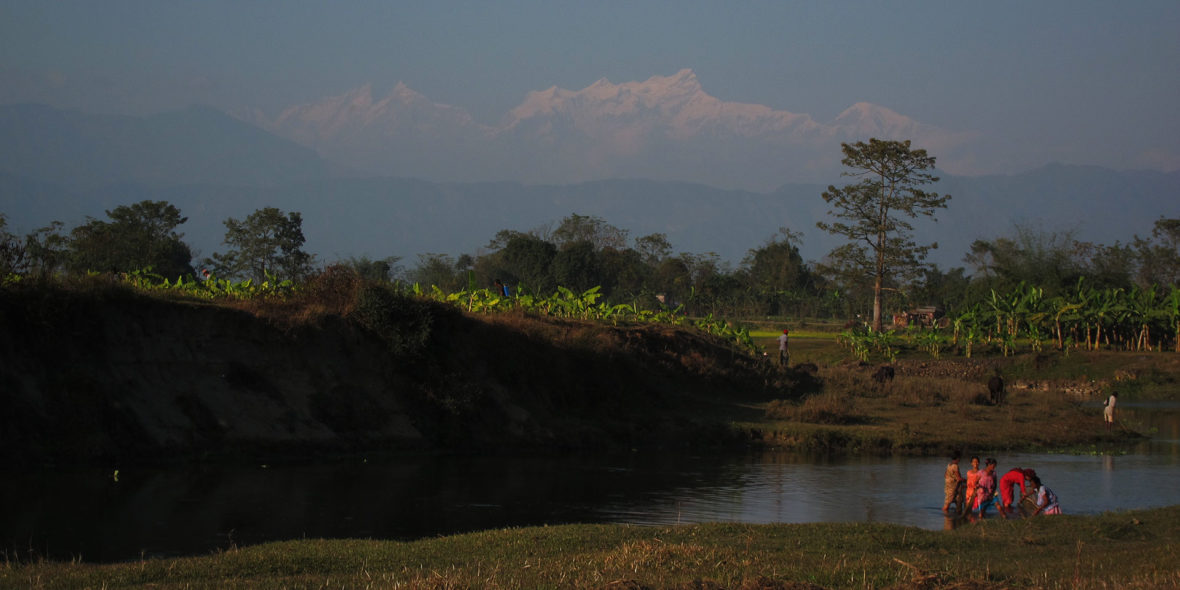
Included In Price
- Transfers as per the itinerary including your flights from and to Kathmandu and transfer to your hotel plus all other transfers as mentioned in the itinerary
- Hotel nights in the hotels specified in the itinerary; based on twin share rooms
- Meals as per the itinerary
- Jungle and village activities with naturalist guides
Not Included In Price
- Services and activities not mentioned in the detailed itinerary
- Any gear or equipment that you may need to rent/buy – please ask us if you would like any advice about gear to bring/buy/rent
- International flights to and from Kathmandu
- Nepal visa fees and international airport taxes
- Any excess baggage charges
- Comprehensive travel insurance that includes trip cancellation and rescue evacuation should this be required for any reason (we require this as the minimum insurance cover)
- Additional nights, optional trips and sightseeing tours outside the detailed itineraries above
Single supplement - Personal expenses (eg mineral water/soft drinks/bar bills, entrance/photography fees at monasteries, laundry, telephone calls, postage, donations, extra snacks, etc)
- Any extra charge that tea house owners may levy for single rooms, attached bathrooms, or hot showers (if these facilities are available) and charging of batteries
- Tips for your trekking crew, city guide, drivers, hotels, restaurants, etc (please ask if you would like guidance about appropriate tips)
- Costs incurred due to changes in programs and reservations due to unforeseen events (eg landslides, strikes, fuel shortages, etc)


